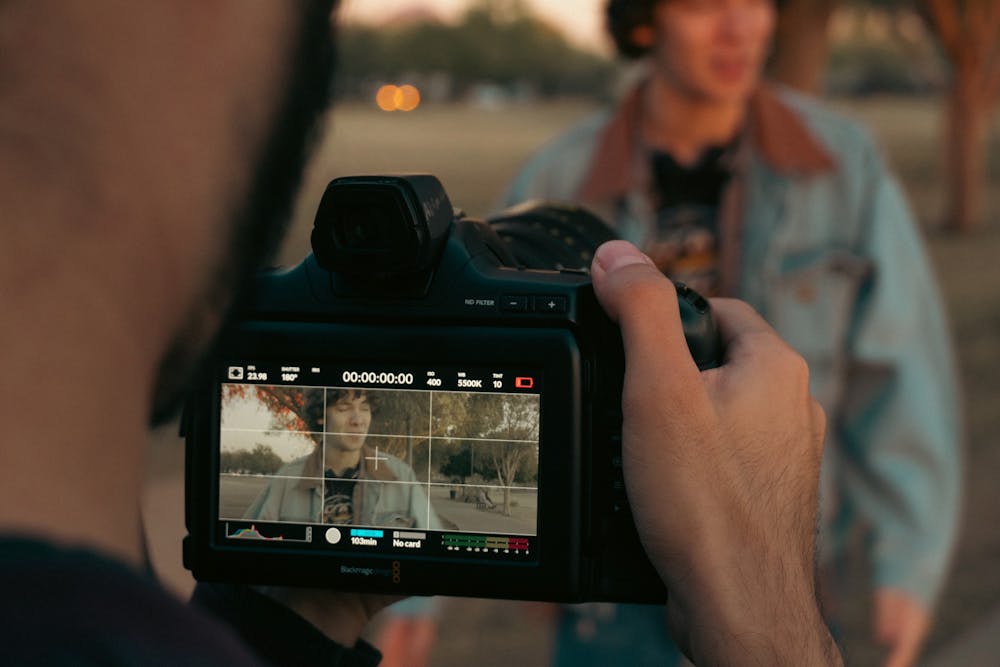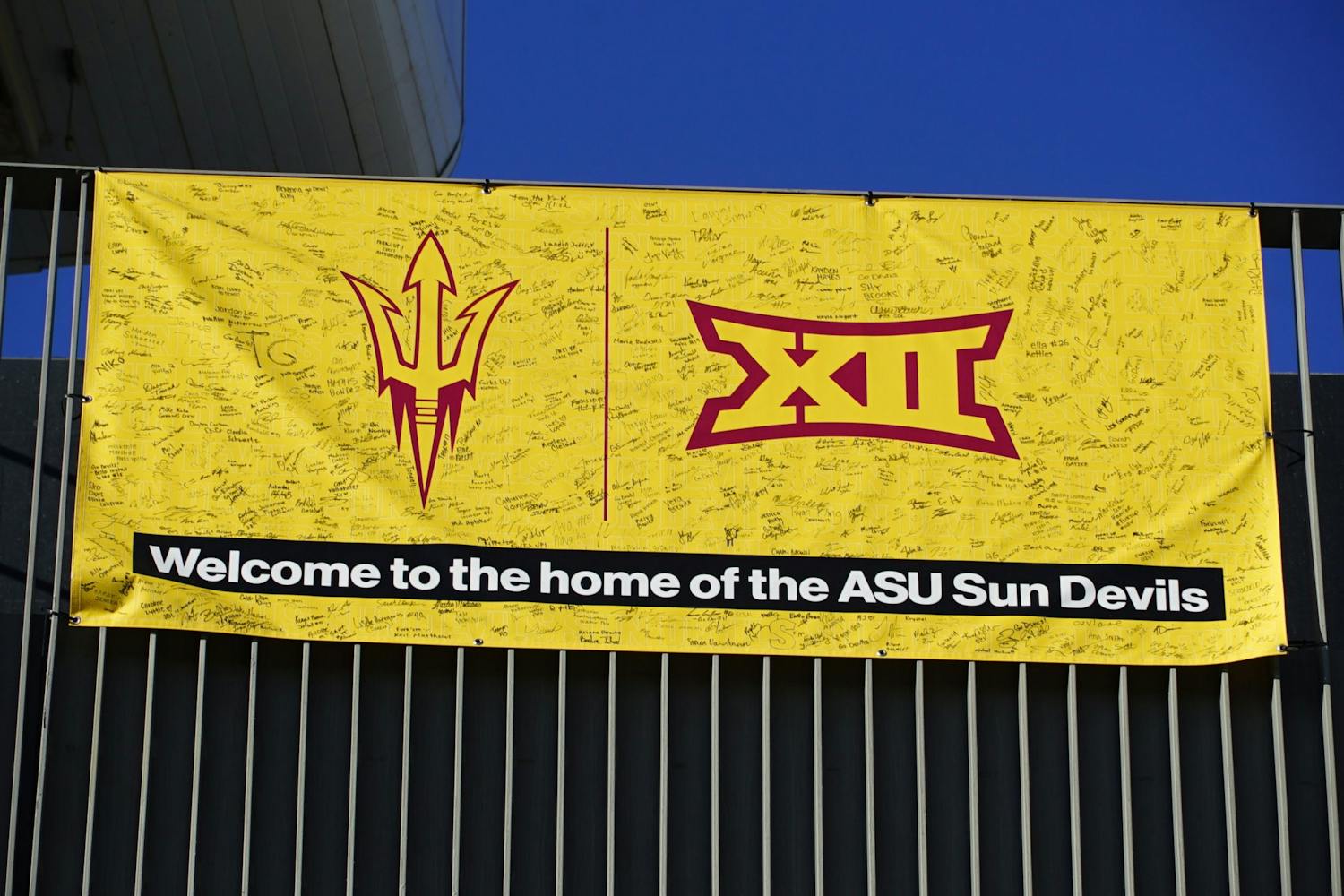Lights! Camera! Crowdfund?
Capstone film projects are the pride of graduating students at ASU's Sidney Poitier New American Film School, but what audiences at Senior Showcase Night may miss while watching the premiere of short films is the extensive budgeting, resourcing and, in some cases, crowdfunding, that took place behind the scenes.
Capstone projects allow students to create original work using the mentorship and resources available through the film school. Capstone films are often the first big directing or producing gig for undergraduate students. The projects bring together students across programs, bolster portfolios and in some cases, the projects go on to film festivals.
Student film projects are not unique to ASU, with other major American universities like Arizona, Vanderbilt and Georgetown boasting opportunities to bring the vision of film students to life across websites for prospective students. What these websites are less likely to highlight is how these student films get funding.
For ASU students, the capstone process is as much a lesson in film as it is in finance.
The project begins with the capstone development course, when writers and directors craft scripts. From there, they forge connections with student producers and build a cast and crew. Just like in the film world, this early pre-production stage is also where the money talk starts, said writer and director Meline Guerrero, a senior studying film and media production.
"Our professors gave us a framework. They gave us a couple different companies that deal in financing short films, independent films. From there, we utilized those websites. We used the one called Seed & Spark," Guerrero said.
Seed & Spark is a favorite among the film students.
"I personally like the Seed & Spark interface the most. They have the most customization abilities and stuff like that," said writer and director Andrew Merfeld, a senior studying film and media production.
But there is a big catch to the platform.
"They require you to raise 80% of your goal in order to keep any of the funds," said Merfeld. "If you don't reach the 80% threshold you don't get to retain any of the money."
Merfeld's film "Astray" met its fundraising goal of $5,000 on the platform. Guerrero and their team made 81% of a $3,300 goal for the film "Catching Smoke." Another film from their class of soon-to-be graduates, "No Questions Asked," met its goal of $8,600 on Seed & Spark.
The film school provides students with extensive equipment and state of the art sound stages at the MiX Center facility in Mesa, as well as faculty resources and post-production tools. Still, the reality is that students are left to come up with their own funding for a list of production expenses.
"The biggest thing is sitting down and going through every single thing you're going to need for this project down to the food for the cast and crew," said "No Questions Asked" writer and director Ashton Sasse, a senior studying film and media production.
Alongside food, Sasse listed transportation as a major cost for her film, which was partly set in Kingman, a city roughly a three-hour drive north from Phoenix.
Another significant cost is publicity and getting the short film in front of an audience. Even submitting a film for a festival can be costly due to submission fees.
The biggest portion of the "Catching Smoke" budget went to insurance. All of the equipment and sound stages at ASU are insured by the school, but the team had to pay insurance on one of its off-campus sets at a Phoenix park. After that, the director and producer were left paying out of pocket for smaller production costs such as a generator and props from Goodwill, which inevitably added up.
Often the bulk of the fundraising falls on the shoulders of the director and producer and the networks they have.
"(For 'Catching Smoke') I started out with a friends and family group. As most people do," said Stella Foval, a senior studying film and media production who produced three capstone films including "No Questions Asked" and "Catching Smoke." "I got a list of friends and family from everyone on our team. I wrote a bunch of emails and did a bunch of posting."
Merfeld said "a huge misconception that a lot of people ... have is that you can get financing from just about anyone. And while at the end of the day you might, it's very much more likely that the money you'll get is from people you do already know and the people that they know."
There are unique circumstances when donors fund a film organically. "Catching Smoke" was able to reach a top-tier donor who worked in the film industry in Los Angeles.
According to Guerrero, "a really big part of it is social media, you don't realize how important it is until after it happens … Our No. 1 thing was just make a page for your film … That is kind of what exposes you to anyone else who might see your film."
Though crowdfunding strategies are taught at the film school, not every filmmaker finances that way.
Jack Streveler, a senior studying film and media production said his film "Remission" was family and personally funded. Streveler kept his budget at $800.
"I wrote my story as if I were going to make it on a shoestring budget," Streveler said. "I say write small and try to make the most of it. If you're going to be going into a capstone course and you're going to be writing a 10-minute film … that 10 minutes kind of limits your options already."
ASU has two "Friends of Film" scholarships for $250 each, given to the peer-chosen best capstone crowdfunding trailers each year. "No Questions Asked" was awarded one, but that is all of the direct financial support the interviewees received from the school.
A development coordinator in the Herberger Institute for Design and the Arts declined to comment on the story.
According to Foval, "We currently operate under 'all directors who want to be directors get their projects made,' which definitely affects how much money is available in our community for these projects."
Regarding the overall capstone film financing process, Merfeld said that "the biggest lesson you learn is that film is a business. I mean, as much as it is an art, it's a business as well and you're not going to be able to create the final product if you don't put in the time or pre-production to gain a budget."
As for crowdfunding, Streveler said, "It's a big part of how we finance things and how we actually get things done, which ASU does not provide. But we have to do it ourselves, which isn't bad, it's just the reality of the industry we are going into."
Editor's note: Streveler worked for The State Press from January 2020 until December 2021 in the multimedia department. He did not contribute to the reporting or editing of this story.
Edited by Claire van Doren, Piper Hansen, Greta Forslund and Grace Copperthite.
Reach the reporter at spbracci@asu.edu and follow @SophiaBraccio on Twitter.
Like The State Press on Facebook and follow @statepress on Twitter.
Sophia is a sophomore studying journalism and mass communication. This is her third semester with The State Press. She has also worked at Nomads with Notebooks and Blaze Radio.




